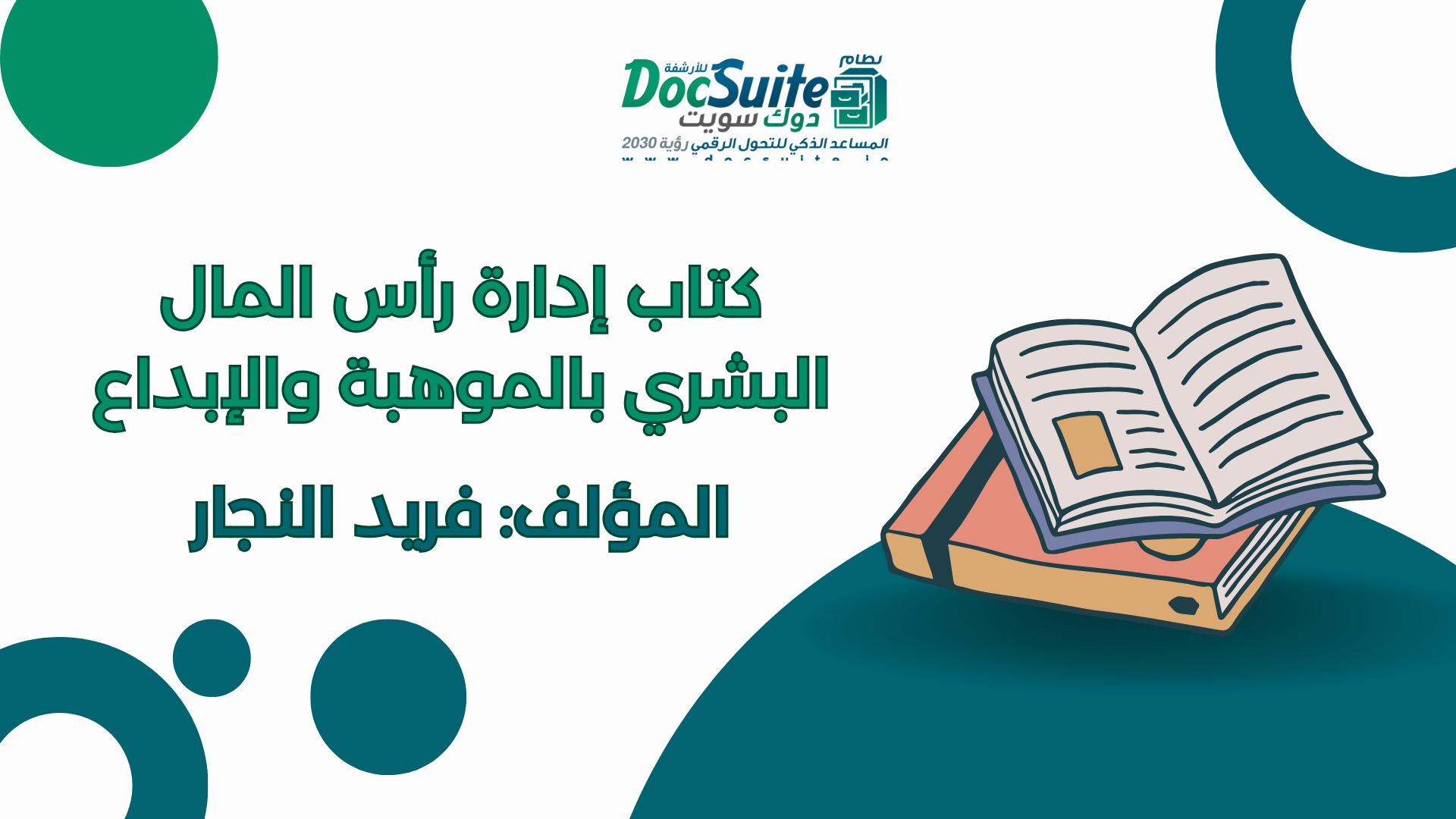Author: Fareed Al-Najjar
Summary of the Book: Managing Human Capital with Talent and Creativity
No one can deny the importance of human resources in organizations and institutions operating in various economic and service fields. Effective human resource management is considered an investment since human resources are now classified as capital that can make a difference in competitiveness and organizational development. This is achieved by paying attention to human resources and creating a motivational environment to produce talents capable of continuous innovation in the face of rapid technological changes.
The book "Managing Human Capital with Talent and Creativity" consists of seven chapters:
Unleashing Creative Energies and Discovering Talents
Talent Management in Organizations
The Relationship Between Innovative Thinking and Talent Discovery
Developing Creative Capabilities to Support Talent
Proposing New Ideas for Talent Discovery
The Role of Talent in Continuous Improvement
Applications of Creativity and Talents
The book explains that Arab labor markets suffer from unemployment, low wages, low productivity, increased foreign labor, and the migration of Arab talents to foreign labor markets. Arab countries, governments, and human resource departments need to focus on distinguished labor in the workforce, characterized by talent, merit, and creativity through testing, discovery, guidance, and development, linking capabilities with the required jobs and tasks. The book also emphasizes that administrative and organizational development should design programs for administrative development to retain and renew talents and innovative capacities. It provides a series of essential skills for the strategic management of human resources.
The book refers to Jean Piaget's theory of cognitive development in individuals, highlighting that a person's ability to interpret thought varies over time according to age. Heinz Werner's theory of organic behavior suggests that an individual's cognitive behavior is not separate from behavior but relies on the unity of the human individual. Freud's psychoanalytic theory states that the foundation of a person's creative and innovative abilities is based on emotions, thoughts, and basic needs, emphasizing human development and individual growth rates.
The book discusses child psychology theories, explaining the variations in creativity and innovation among children and the ability to interpret creative behavior from childhood based on:
Psychological Analysis
Organic Analysis
Learning Theories
The book emphasizes differentiating between learned behavior and spontaneous behavior, noting the difference between learning and maturity. Learning is influenced by the relationship between stimuli and responses, primary and secondary reinforcement processes, stimulus generalization or discrimination, and knowledge elements including:
Images of Things
Symbols of Things
Rules of Things
The book also identifies causal relationships between these elements and an individual's creativity and innovation, referring to Piaget's insights on factors affecting learning in the individual's organic state, emotional state, motivations, such as achieved goals, curiosity, and the drive for learning and knowledge.
The author discusses the impact of learning on individual creativity and innovation, evidenced by ability tests, IQ scores, educational achievements, and choices. Media, television, and the information and communication technology revolution significantly influence an individual's scientific imagination, love of knowledge, and opportunities for inventions and intellectual contributions.
The book explores the role of genes in human development, distinguishing between chromosomes, genes, and DNA, and their impact on human development, such as intelligence, personality, natural traits, creativity, and innovation. Environmental factors also play a role in developing capabilities and building creative foundations, including public health, childhood and motherhood, education, nutrition, parental emotional state, smoking and pollution, diseases, treatment, education quality, media, societal values, and safety and security.
The Relationship Between the "Doc Suite HR" System and the Book "Managing Human Capital with Talent and Creativity"
The "Doc Suite HR" system facilitates various human resource processes, such as recruitment, employee management, performance tracking, payroll, and other tasks related to human capital.
The book focuses on developing and enhancing human capital through strategies based on discovering talents and encouraging creativity and innovation among employees.
The relationship between the "DocSuite HR" system and the book "Managing Human Capital with Talent and Creativity" lies in their shared goal of enhancing and improving human capital management. The "Doc Suite HR" system can effectively implement the human capital management strategies outlined in the book, such as tracking employee performance and analyzing data to identify talent and creativity. Similarly, the book provides guidance and strategies that can be used to improve the performance of the "Doc Suite HR" system in line with human capital development goals.
You can download the book "Managing Human Capital with Talent and Creativity" directly from here.
